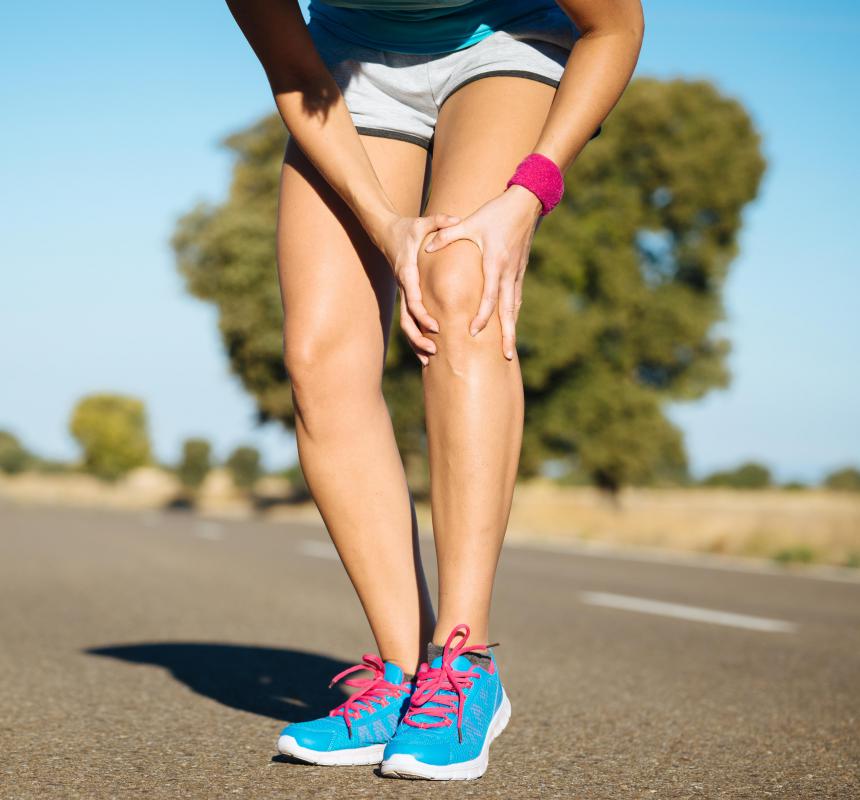At WiseGEEK, we're committed to delivering accurate, trustworthy information. Our expert-authored content is rigorously fact-checked and sourced from credible authorities. Discover how we uphold the highest standards in providing you with reliable knowledge.
What is Chondromalacia?
Chondromalacia patella, also sometimes know as runner’s knee, is a condition resulting from damage to the cartilage under the kneecap. Most people who get this condition notice achy knees, especially if they walk upstairs, or if they kneel. Squatting can prove painful, and even sitting for long periods of the time can result in knee discomfort. Those with chondromalacia may also be able to hear an audible “grinding” sound when they extend their knees.
The pain felt with chondromalacia is usually right at the front of the kneecap. Some people also may feel like their knees are stiff. Pain is typically described as more uncomfortable than debilitating and when the knees are rested, it may improve to a degree.

There are a number of things that may result in chondromalacia. Sometimes people, like runners, who use their knee joints a lot, may develop the condition. Other times, arthritis in the knees may cause it. Lack of stretching before exercise can damage knee cartilage. Excessive weight may contribute to it, or even something as simple as wearing poorly fitting shoes may result in the condition.

If you suspect you have chondromalacia, you should visit a doctor. Diagnosis is usually made by physical exam, but a doctor might order tests like X-rays or magnetic resonance imaging (MRI) to rule out additional or other conditions. Standard treatment for the condition is making sure that you avoid activities that are difficult on your knees, like walking up and down stairs. For greater comfort, doctors may prescribe non-steroidal anti-inflammatories, such as ibuprofen, or occasionally acetaminophen is prescribed to alleviate pain.

Doctors may also suggest some muscle-strengthening exercises. These are usually simply done and can help strengthen the muscles that surround the knees, and the hip muscles. Usually chondromalacia will resolve with rest in about six weeks. However the condition may be more severe and take longer to resolve in some people.
When chondromalacia is not resolving with treatment, doctors may recommend a few surgical techniques to help. One such surgery, arthroscopy, cleans out bits of the damaged cartilage from the knees, but there is some question as whether this surgery proves effective in the longterm. Occasionally the condition is caused by a poorly aligned kneecap and requires surgery to realign the kneecap. This is a more extensive surgical procedure than is arthroscopy. Most people will not require surgery and will be able to recover with appropriate rest and adherence to the exercise plan provided by their doctors.
AS FEATURED ON:
AS FEATURED ON:



















Discussion Comments
I think that I may have chondromalacia. I went to an orthopedic specialist the other day complaining of pain just under the kneecap. I seem to have all the symptoms. It came on after I walked a long distance.
I have pain when I go up and down stairs, when I squat down, and when I walk. I don't feel pain when I'm not moving my knees.
What to do? The doctor said it will feel better in about 6 - 8 weeks. But in the meantime?
Post your comments